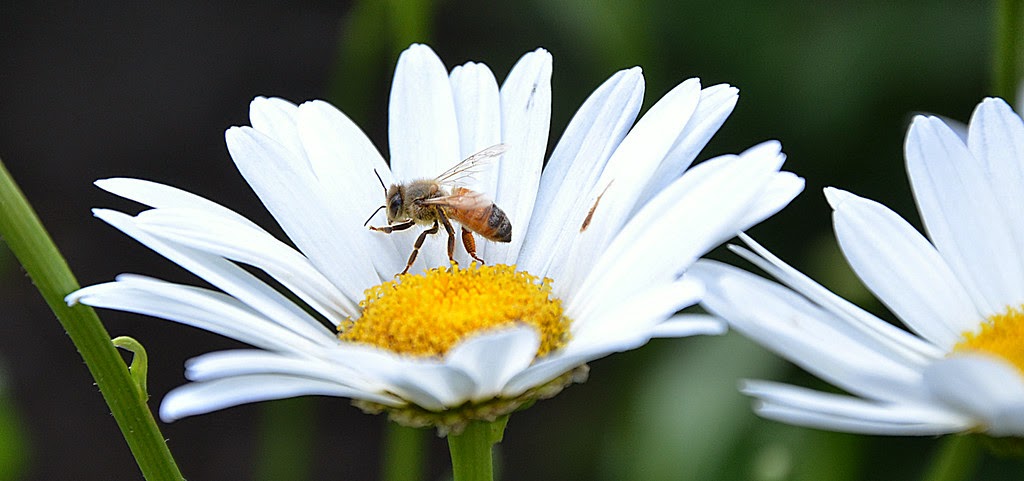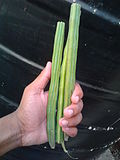 |
| Beautiful Hawk overlooking the garden area |
Shortly after arriving at the Bee Farm yesterday I noticed a large bird overlooking the garden from a perch on the power line. It was a large beautiful Hawk. When the blueberries start to ripen, it will be convenient to have a Hawk around to keep birds away from the garden. At least in theory. Because after a few minutes of observing this Hawk a Blue Jay swooped down to engage the Hawk and they both flew off in a chaotic flight. Obviously the Blue Jay was a little more agile in flight and able to provoke the Hawk somewhat.
Our neighbor told a story that last year his wife saw a small Hawk take a baby Blue Jay from a nest. The baby Blue Jay got away so perhaps this was the now grown up Blue Jay remembering that fateful day and taking it's vengeance out on the Hawk.
 |
| Green Beans |
Green Beans are growing like mad and we'll be harvesting some this weekend. I tasted one yesterday and it was delicious. Eggplants are multiplying and growing fast. Sugar cane has sprouted and a couple are about 8" already which surprised me. Little tomatoes are on the vine and a few peppers are growing. Strawberries doing poorly still and I don't hold much hope for them any longer. I have enough papayas to supply an army. What was I thinking?

















































